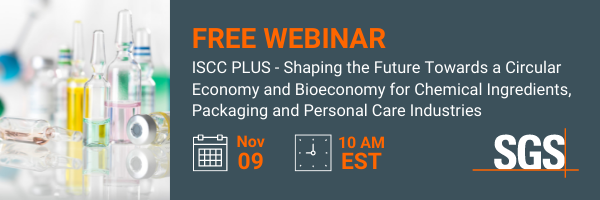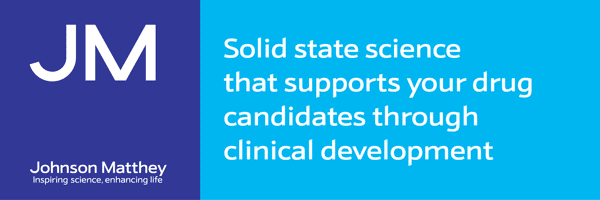Regulations & EHS&S
Building a better tomorrow with harmonized pharmaceutical regulations 20th February 2018
By Wendy Bingaman and Dago Caceres from Dow Pharma Solutions
Wendy Bingaman and Dago Caceres from Dow Pharma Solutions consider the challenges faced by companies seeking regulatory appr

Wendy Bingaman and Dago Caceres from Dow Pharma Solutions consider the challenges faced by companies seeking regulatory approval for novel excipients, and emphasize the importance of unifying regulatory standards to make them transferrable across country lines.
With the world being more connected today than ever before, new initiatives are taking shape across industries to unify regulatory standards and make them transferrable across country lines. Especially prominent in the pharmaceutical industry, regulators are working to develop strategies to create more international consistency.
Current drug manufacturers face a number of challenges when developing solutions for cross-border customers. Navigating the unique regulations between countries is more research intensive, which increases time and resources to develop new drugs and get them approved. Drug manufacturers must be familiar with a wide range of regulatory standards, specific to each geography and practice. By harmonizing standards, drug manufacturers have the ability to increase speed to market, enjoy simpler partnerships with foreign companies and allocate research used on studying regionally-specific regulatory standards to industry innovation.
Harmonizing regulatory standards is not a new concept. In fact, regulators in Europe, the United States and Japan, have been cooperating for many years to align standards and work together to make a cohesive global drug industry. As other countries begin to revamp their pharmaceutical offerings and push innovation with cross-border customers, the importance of functioning as an all-inclusive global industry is increasing.
FDA-driven regulatory agenda
In the US, under the Generic Drug User Fee Act (GDUFA), the generic drug process has become increasingly complex as the Food and Drug Administration (FDA) brings more guidance into the process. The FDA is continuously judged by its timeline to bring a drug from approval to market. A more streamlined, efficient process is a high priority for 2018 and beyond.
With an increasing amount of hurdles for drug manufacturers, it is common to receive a Refuse to Receive (RTR) letter from the FDA for administrative or content gaps in their development process. One way drug manufacturers can reduce the likelihood of receiving a RTR letter is by partnering with their raw materials suppliers to prepare safety and regulatory justifications with proven test results.
The growing trend of partnering with raw materials suppliers for safety justification assistance is likely connected to the role the Inactive Ingredient Database (IID) plays in drug approval. The database – established by the FDA – lists all excipients used in approved drug formulations, descriptions of the type of excipient, dosage form, route of administration and maximum potency. The FDA places the responsibility for preparing safety justifications on drug manufacturers. When manufacturing generic drugs, formulators use the excipients listed in the IID to avoid the need to perform a safety justification which would lengthen the approval process.
Challenges in novel excipients
Currently, there is no official FDA approval process for a new excipient independent of a finished drug formulation. FDA has a broad definition of ‘novel’ and lacks a process to approve these independently whether they are new chemical entities, modifications of existing excipients, co-processed excipients, different grades of existing excipients within a product family, or an excipient currently used in an approved drug but the sponsor wants to use it in a different route of administration or a level higher than the current IID.
Often these same excipients are evaluated for use in food as a product family and are already approved for use as direct food additives or generally recognized as safe products, but FDA’s Center for Drug Evaluation and Research (CDER) has not accepted the safety evaluation of FDA’s Center for Food Safety and Nutrition (CFSAN) and other globally recognised experts to apply these to safety assessments to the drug product review.
The lack of approval process has hindered pharmaceutical innovations, due to drug manufacturers’ reluctance to incorporate a novel excipient if there is no track record of its approval by FDA.
However, novel excipients offer unique technical benefits and are untapped potential. Many contain the same safety profile as excipients used in approved drug products as they appear in the same polymer family. Drug formulators are still hesitant, because they assume that if they incorporate these new excipients they will receive a RTR letter, even though they are in the same family and contain no safety or toxicological differences to excipients already in use.
For this reason, Dow Pharma Solutions has implemented a number of resources to raise awareness on the benefits and safety of novel excipients. This includes hosting global technical seminars to discuss attributes of excipients, provide toxicological and safety reports for new ones and work with the FDA to refine its approval process.
China climbs the ranks in pharma
In recent years, China has been the focus of worldwide attention in its efforts to boost the scientific rigour and credibility of its pharmaceutical industry regulatory review process. Determined to bring their regulatory approval process for excipients, active pharmaceutical ingredients, packaging and finished drugs up to the same standards as those of other dominant regulatory agencies, China has enhanced its new drug regulations in hopes to trigger the strengthening and evolution of its owns agency and processes over the next 10 years.
In 2016, China launched new regulations that significantly changed and challenged its existing policies. The so-called “China Bundling Review” made it mandatory for excipients to be submitted for review in coordination with a finished drug application to establish an approval number. Late in 2017, this process was ‘de-bundled’ where the excipient manufacturer must now submit a dossier equivalent to a Drug Master File (DMF) to the China Food and Drug Administration (CFDA) that will be referenced when they review a specific drug product application submitted by the drug product manufacturer. This new process has similarities with the US FDA’s DMF and drug approval processes. As with the previous Bundling Review, this new protocol applies to all domestic and imported excipients, even those that had been used in China for decades.
China’s decision to reinvent their pharmaceutical front in their own, unique way has had a great impact on the rest of the world and the goals of other countries to unify regulatory standards. China’s high-patient population has companies across the globe looking for ways to get their foot in the door and tap into the market potential.
China’s elevated global status could create a speedbump in unification if other countries decide to follow in their footsteps and forgo harmonizing regulations.
Staying ahead of regulatory standards
It is increasingly important for drug manufacturers to have reliable excipient suppliers with a deep understanding of the pharmaceutical industry to help navigate the increasingly complex global regulatory landscape. By building these strong supplier/customer relationships, drug manufacturers receive quality, technical and regulatory support, playing an important role in facilitating the overall drug approval process. The future of a unified pharmaceutical front lies first in drug formulators’ ability to first unify with their partners.
By establishing strong relationships and understanding industry issues across the pharmaceutical supply chain, the ability to help drive and move things in the right direction will be a much easier feat.
Authors:
Wendy Bingaman, Environmental Health & Safety Product Sustainability Leader at Dow Pharma Solutions (WBingaman@dow.com) and Dago Caceres, Global Strategic Marketing Leader at Dow Pharma Solutions (DagoCaceres@dow.com).



